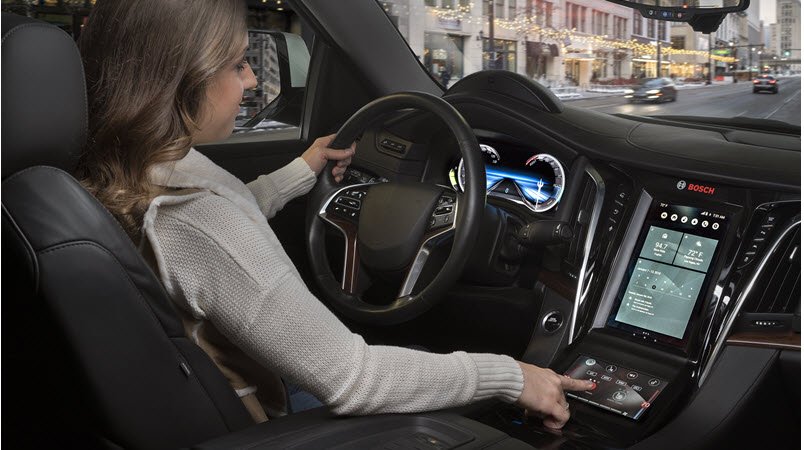Bosch builds an infotainment system that just might not suck

Whether it's high-end brands like Mercedes-Benz with its kludgy COMAND system, which we hope will be replaced with the MBUX platform revealed at CES, or more mainstream vehicles like Hondas (with their frustrating, knobless Display Audio interface), getting the kind of content and ease of use in the car that we're used to having on other connected devices is far too complex and sometimes costly.
While Apple and Google have tried to ride to the rescue with CarPlay and Android Auto, respectively, they're limited solutions. No automaker or tech supplier has been able to deliver an easy, economical, flexible and non-distracting infotainment solution. But Bosch could be closing in on this elusive goal, given the digital cockpit concept demo I recently received at CES.
Displayed in a Cadillac Escalade, the concept featured five interconnected color screens: one in the instrument cluster, two in the center console, and two more in the front-seat headrest for second-row passengers. The digital cockpit concept demo had cool features such as haptic-feedback touch-screen controls that created an edge-like feeling similar to a physical button, facial recognition to confirm driver credentials, and the intelligence to know the location of a phone in the car to lock it out to keep the driver from texting.
The most significant aspect of the Bosch digital cockpit concept wasn't visible — but shows the company's vision for a future of seamless, convenient, cost-effective and safe in-car infotainment. It's powered by a single electronic control unit (ECU) that can simultaneously run multiple operating systems and also separates vehicle and infotainment controls for critical safety and cybersecurity reasons.
Most modern cars can have as many as 100 separate ECUs, Philip Ventimiglia, product manager for Bosch Car Multimedia North America, explained at CES, and several just for infotainment functions. "The goal is to reduce that to about 10 so that we can save cost throughout the vehicle and enable new technologies," he added.
"OEMs want to put more technology into cars, but it costs money," Ventimiglia said. "So if we can create systems that cost quite a bit less, then that gives the OEMs the opportunity to add new features."
Ventimiglia used surround-view cameras as example of a feature that could be brought to more cars by cutting complexity. "There's usually a separate ECU in the car for a surround-view camera," he noted. "If we can integrate that into a single system — we already have the processing power and can handle the video feeds and display it on one of the car's screens — that significantly helps to save money on each vehicle."
But just adding new features isn't the answer — as anyone who has used, say, the Lexus Remote Touch interface and Enform infotainment system can tell you. Accessing features and content in the car needs to be as straightforward as using your smartphone, and leveraging its connectivity and familiarity with an individual user's needs.
"Right now, we have all our information on these devices," Dr. Stefan Hartung, a member of the board of management for Robert Bosch GmbH, said in an interview at CES, pointing to my iPhone. "The car is one of your living spaces. You want to have total access to your communication, entertainment and other information while driving, but not become distracted."
Easier said than done, as automakers and tier-ones have discovered. But Bosch said that the pieces are already in place to make changes to vehicle architecture and connectivity, and that the digital cockpit concept is ready for production.
Bosch added that the digital cockpit concept could be in vehicles by 2020 if automakers give it the green light, and Hartung confirmed that Bosch is "partnering with OEMs to get this into the car." Considering the current state of vehicle infotainment, it can't come soon enough.
Related News
